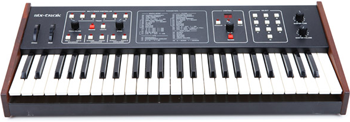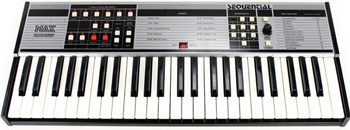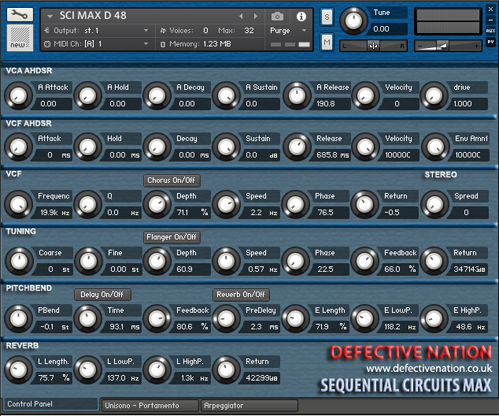Sampled Instruments
Synthesizers, Keyboards & Modules
Akai AX-73 SynthCasio CZ-101
Casio VZ-1
EDP Wasp Synth
Ensoniq SQ-1 Plus
Korg MS 10
Korg MS 20
Korg Poly-800
Novation Super Bass Station
Roland JP-8080/JP-8000
Roland Juno 1
Roland Juno 106
Roland JX-3P
Yamaha TX802
Budget Samples
Access Virus CCasio HT-6000
Cheetah MS6
Clavia Nord Lead 2X
KAWAI K1/K1m/K1r
Korg DW8000
Korg Triton
Novation Supernova II
Quasimidi Technox
Roland D 50
Roland JD800
SCI MAX / 6-Track
SIEL DK 80
Sequential Circuits Six-Track/MAX Samples
 In 1984 keyboard & synth players were continually looking for something new and many were beginning to grow tired of the old analog sound. The search for something more realistic paved the way for experimentation with various forms of digital synthesis. Yamaha had exploded onto the scene with their DX7 and everyone wanted one but gigging musicians still needed some of those trusty analog sounds, especially if they were a cover band. In an effort to cut costs and to appear more modern synths started to lose their one knob/slider per function opting instead for an edit one function at a time. Sequential Circuits released the Six-Track and their Max synths which featured MIDI and the 6-Track had the ability to layer sounds. Excelling at simple brassy sounds they we also capable of a wide variety of sounds (which was surprising as it was a single oscillator per voice synth). Both synths remain popular today and the MAX is something of a bargain compared to the Six-Track which holds its price well by comparison. Read more...
In 1984 keyboard & synth players were continually looking for something new and many were beginning to grow tired of the old analog sound. The search for something more realistic paved the way for experimentation with various forms of digital synthesis. Yamaha had exploded onto the scene with their DX7 and everyone wanted one but gigging musicians still needed some of those trusty analog sounds, especially if they were a cover band. In an effort to cut costs and to appear more modern synths started to lose their one knob/slider per function opting instead for an edit one function at a time. Sequential Circuits released the Six-Track and their Max synths which featured MIDI and the 6-Track had the ability to layer sounds. Excelling at simple brassy sounds they we also capable of a wide variety of sounds (which was surprising as it was a single oscillator per voice synth). Both synths remain popular today and the MAX is something of a bargain compared to the Six-Track which holds its price well by comparison. Read more...
About our Sequential Circuits Six-Track/MAX sample collection
 We sampled over 600 different patches on the SC Max (same synth engine as the Sixtrack) at 4 notes per octave across 5 octaves. As well as sampling the built in patches we also sampled the raw waveforms, including various PWM (pulse width modulation) settings. The intention of sampling all of the raw waveforms and their various combinations, was to create a construction kit able to be used in conjunction with our Kontakt interface to conjour up all manner of synth sounds way beyond the capabilities of the Sixtrack or Max. While being able to produce modern sounds the samples retain the character of the original instruments. By applying a judicious amount of filtering it is possible to create a vintage patch with controlable modulations thus adding dynamic range to the sound while maintaining that characteristic sound of a vintage synthesiser.
We sampled over 600 different patches on the SC Max (same synth engine as the Sixtrack) at 4 notes per octave across 5 octaves. As well as sampling the built in patches we also sampled the raw waveforms, including various PWM (pulse width modulation) settings. The intention of sampling all of the raw waveforms and their various combinations, was to create a construction kit able to be used in conjunction with our Kontakt interface to conjour up all manner of synth sounds way beyond the capabilities of the Sixtrack or Max. While being able to produce modern sounds the samples retain the character of the original instruments. By applying a judicious amount of filtering it is possible to create a vintage patch with controlable modulations thus adding dynamic range to the sound while maintaining that characteristic sound of a vintage synthesiser.
Even with a somewhat limited synth the MAX is capable of some diverse sounds which can be changed using all the knobs on a midi controller such as the Behringer BCR2000. Therefore it would simply be such an enormous task to sample every sound so we decisded to sample the factory presets and a selection of other patches including a wide selection of bass synth patches. We also sampled as many raw waveforms as possible, including a multitude of Pulse widths and PWMs (Pulse Width Modulations). The idea being that of all the various filters there are not that major differences between them and the filter of the MAX can be almost replicated by Kontakt (EXS24 has a filter too) so we concentrated on getting the most important aspects nailed. We did consider running the synth through a selection of our filters but we decided against such a mammoth task in favour of sampling the synth running through a very desirable analogue chorus pedal that works rather like the famous Roland Juno chorus, the results of which are rather lush and incredibly useful as the raw samples for your patches in Kontakt. All of the samples featuring chorus are stereo while all others are mono. So, on only 3 DVDs we have managed to fit an incredible construction set. However we also decided to include the amazing Photosynthesis Kontakt interface to which we added a small selection of MAX samples from which we created 50 more patches for you to experiment with and add to. Below is an image of our Kontakt interface designed to aid quick changes to every patch within Kontakt. All of the patches we sampled feature thisinterface but you need the latest version (5.5 at this time). Using our interface and the Kontakt synthesis engine we modified each patch to create a totally new one so you get an additional 600 synth patches featuring our samples of the Sequential Circuits MAX / Six-Track synth.

Included in the Sequential Circuits Six-Track/MAX sample collection:
- 600 Sequential Circuits Six-Track / Max patches sampled available as Kontakt 2 instruments.
-
600 Sequential Circuits Six-Track / Max patches sampled available with Kontakt 5.5 interface (above).
- Over 600 additional patches created using our interface and the Kontakt synthesis engine.
50 patches using the Photosynthesis engine for Kontakt (supplied).
- Free copy of our Ensoniq SQ-1 PLUS sample collection
|
||||||||||||||||||||||||||




